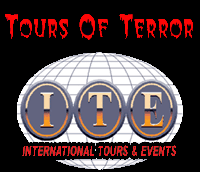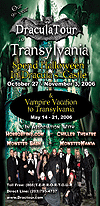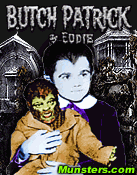
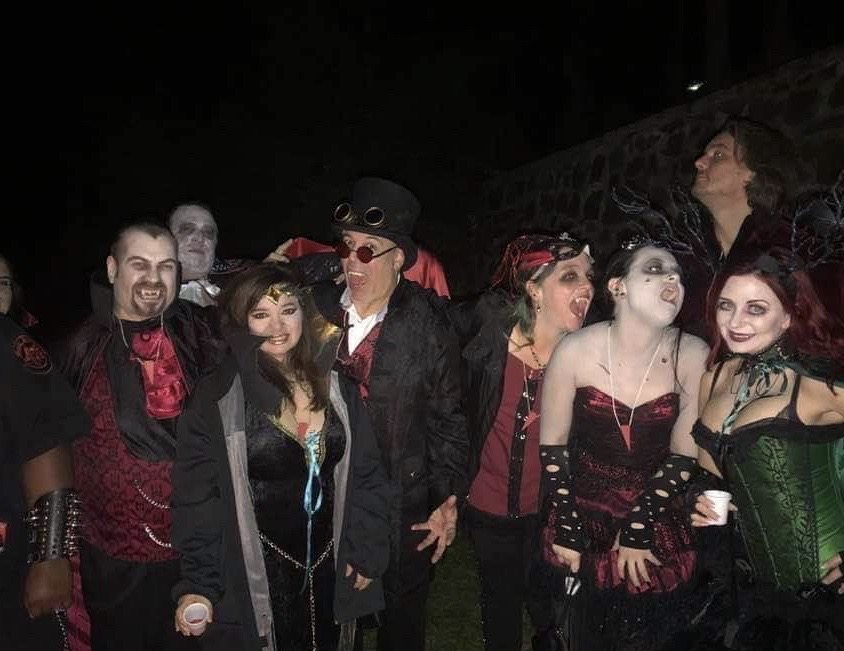
Day 1
Our journey began when we met tour organizer Charles at the airport. Our group seemed to click quickly, as we were given our flight itineraries, name badges, goodie swag bags and a brief but informative orientation. The flight went smoothly and the tour of a lifetime was about to begin.
Day 2
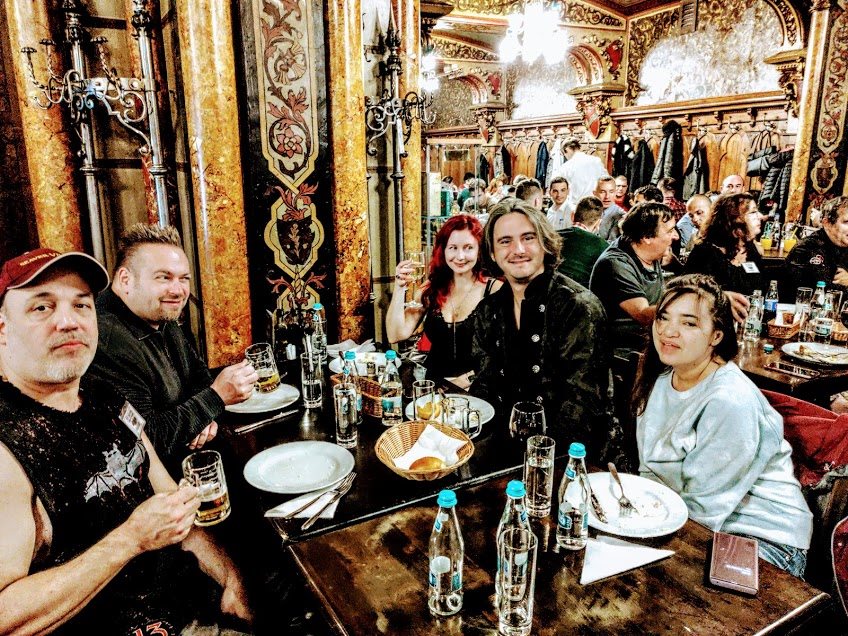
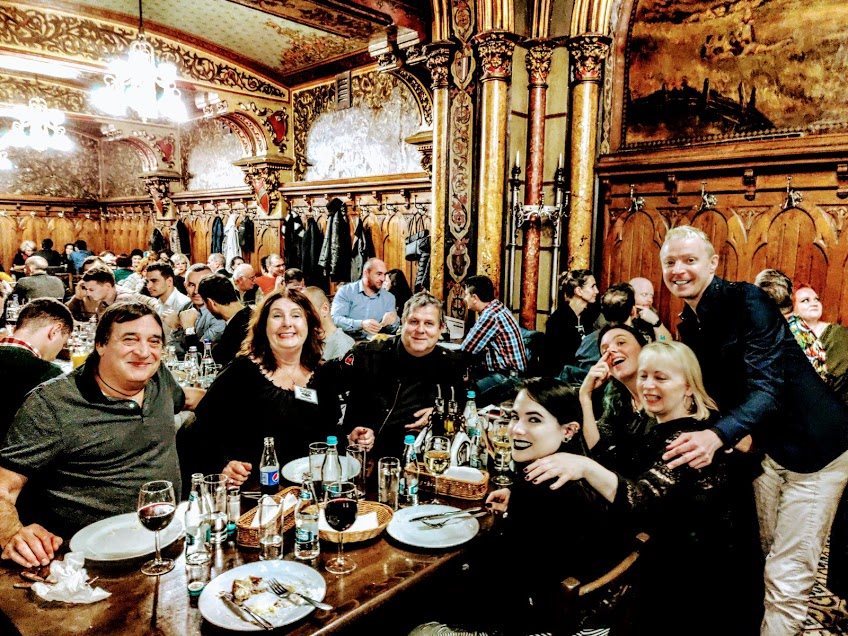
This Halloween vacation began at our arrival in Bucharest, southern Romania’s capital city, where we checked into the Hotel Capitol. Our diverse and uniquely eclectic group did not notice any of the locals ‘crossing themselves’ upon encountering us; however, the night was still young. Radu, our awesome tourguide and impressively knowledgeable historian, took us on a leisurely walking tour before immersing us in a satisfying and entertaining dinner. On our way to the restaurant, we got a glimpse of the Curtea Veche, a.k.a the ‘Old Princely Court’ of Vlad III Dracula. Though construction was underway, we were able to peek through the covered scaffling to view the infamous bust of Vlad the Impaler and areas of the ruins under glass. Our tasty three-course dinner was accompanied by live music – a trio featuring a violinist, keyboardist, and accordionist – but the highlight of the night had to be a mute clown that was hell-bent on garbing us up in outrageous headgear, hilarious glasses, etc. Though we normally “don’t drink…wine” we partook this evening; and it climaxed with Carl performing a Russian folk dance to an accordion solo. After the musician warned us with the ‘evil eye,’ we went back to our roost for a good night’s rest before embarking to Snagov the following morning. The adventure had begun rather innocently.
Day 3
In the morning, we traveled to a quiet commune north of Bucharest known as Snagov. There we found ourselves on a tiny island accessed only by a footbridge – one which was built across a brisk, cold lake. This was the location of Vlad III Dracula’s resting place. Or was it? Since the 30s, several excavations have occurred: one revealing animal bones, and a second rendering the decapitated corpse of a richly dressed body. According to Radu, the remains of the later were taken to a secret Romanian government facility where its DNA is being studied by the request of noble families (including Prince Charles). However, there are stories that the body disappeared upon arriving, while other historians claim Vlad Tepes was secretly buried in a church in Naples, Italy. Whatever the case may be, the fact that the Impaler’s body is not in his grave just adds further mystery to the vampiric legend.
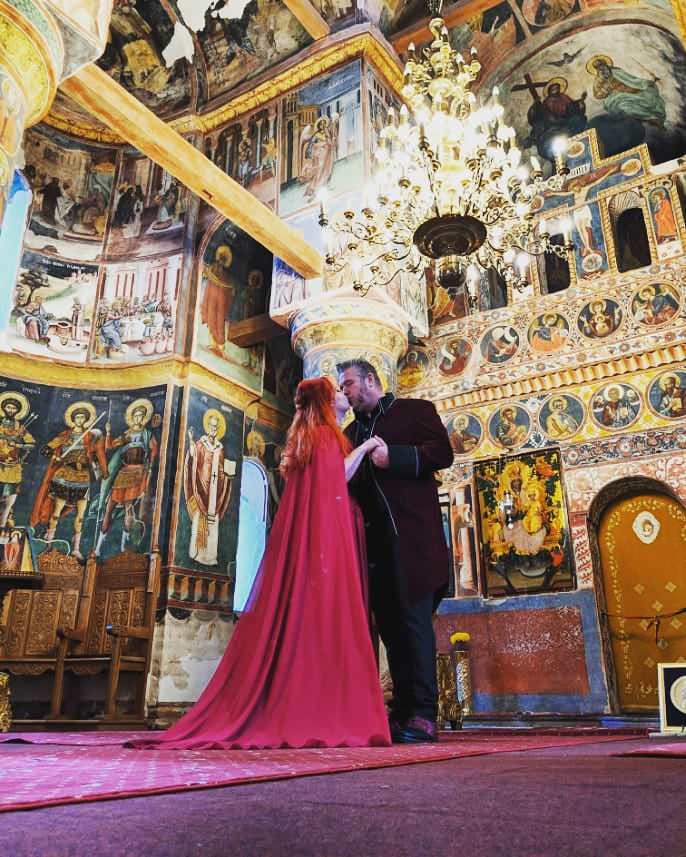
The lonely monastery itself, complete with an orthodox church, operated as a prison for traitors by Dracula III in 1456 and later as a printing press. The Byzantine structure was surrounded by many creepy willow trees that shielded the overcast sun (which was ideal for our group), and appeared to be guarded by many dogs (all of which our fang gang quickly befriended – despite Radu’s warning that ‘they bite’), omg with a missing gentleman Radu described as a ‘crazy monk.’ The impressively, intricate architectural design stunned all. The mastered masonry was one of a beautiful pebbled-like appearance. Radu pointed out that its original ornate door is kept in a museum in Bucharest. The interior was equally startling, complete with grand pillars boasting mosaic religious colorful art. Indeed, the shrine was an amazing tribute to the celebrated famed ruler.
Stephan, our fearless bus driver, then drove us to the city of Brasov, where we visited Castle Bran, considered one of Romania’s most famous and photographed places. It is worth mentioning that this castle is often mistakenly referred to as Castle Dracula; however, it was neither built nor owned by Vlad the Impaler. The Hungarian King Louis the Great commissioned its original structure in 1377; though Dracula III had connections with the castle during his first and second reign when his army passed through Brasov and most likely visited or spent the night. Vlad the Impaler was also locked up in the castle in 1462 when he was captured by Hungarian King Matei Corvin for two months.
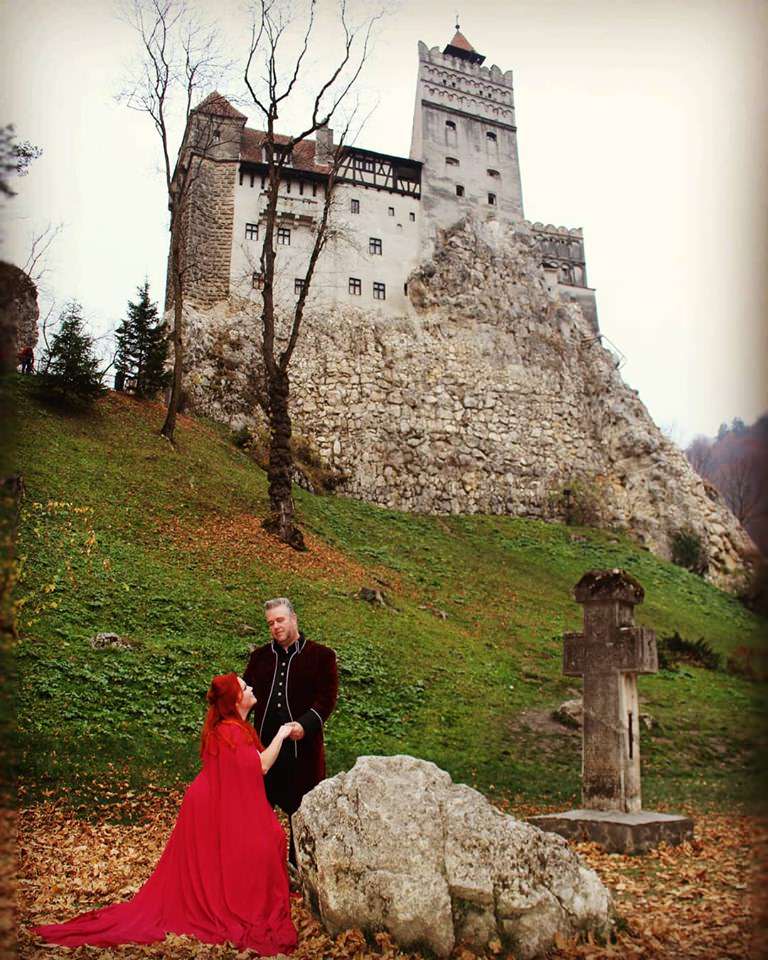
Radu shocked us when he mentioned that the gorgeous castle was recently bought by Disney and that they even attempted to purchase the namesake “Dracula.” Romanian officials denied the later request, attesting the name is part of their heritage and compared it to a Romanian corporation trying to buy rights to the name “Abraham Lincoln” in the United States. In about a year, Disney will probably begin to leak their intentions surrounding the property. This DracPack is glad that we saw it before it is covered up with mouse ears and princesses.
This evening our coven nested at the Coroana Brasoveana in Brasov, located on the picturesque Union Square, not too far away from the historic Black Church.
Day 4
We spent the morning in Brasov, visiting the Black Church and the Vila Katharina (the home of a blond lass whom delivered two children with Vlad the Impaler around 1455).
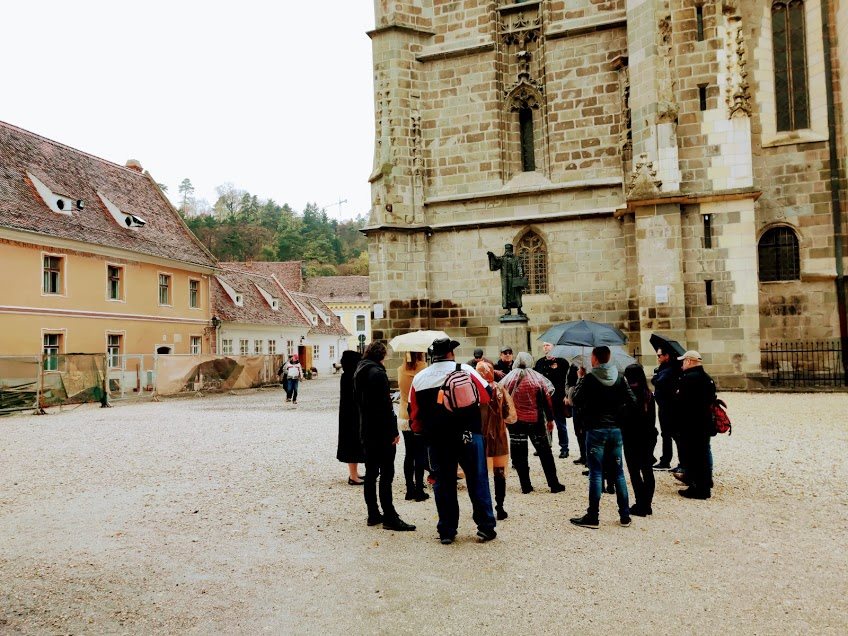
Radu then presented us with a ‘mock witch trial,’ which Kevin recorded all twenty minutes on video. This boisterous yet interesting event started in the middle of the square and ended up in the basement of a rustic art gallery – all performed by locals in full-period dress and varied acting abilities. From what we could gather, the accused did something ‘evil’ to a ‘villager’s cow’ and ‘needed to burn’. Several of us participated with a forceful “yay” or “nay” and were even interviewed by the Romanian news afterwards. We believe the poor girl got set free in the end…or at least that is what we told ourselves.
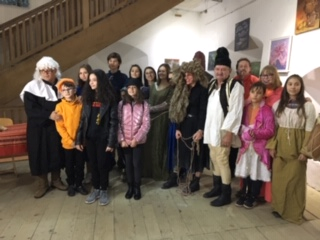
We then took a steep hike up a haunted covered bridge stairwell to the Church on the Hill. To the right of the structure appeared an equally impressive, ancient gothic graveyard that wound its way back to the bottom. The combination of there being ravens in the sky and many of us decked out in gothic garb led to a most ominous, eerie, effect. I believe we were all secretly waiting for the Thriller video to act out before our eyes.
That evening we arrived in Bistritz, which is the location of Chapter One of Dracula by Bram Stoker. Here we checked in the Golden Crown Hotel (spelled Krone in the novel) and settled in to dine at the Jonathan Harker’s salon. Like the protagonist Harker himself, we dined on “robber steak” – bits of bacon, onion, and beef, seasoned with red pepper, and strung on sticks and roasted over the fire, in the simple style of the London cat’s-meat!” I believe we all made a memorandum for our friend Mina Murray back home of this unique recipe. We ascended from the dining parlor to our rooms.
Day 5
The morning of Halloween we journeyed up the Borgo Pass – the same frightening coach ride Jonathan Harker made in Chapter One of Dracula to meet the Count and reach the fictional Castle Dracula.
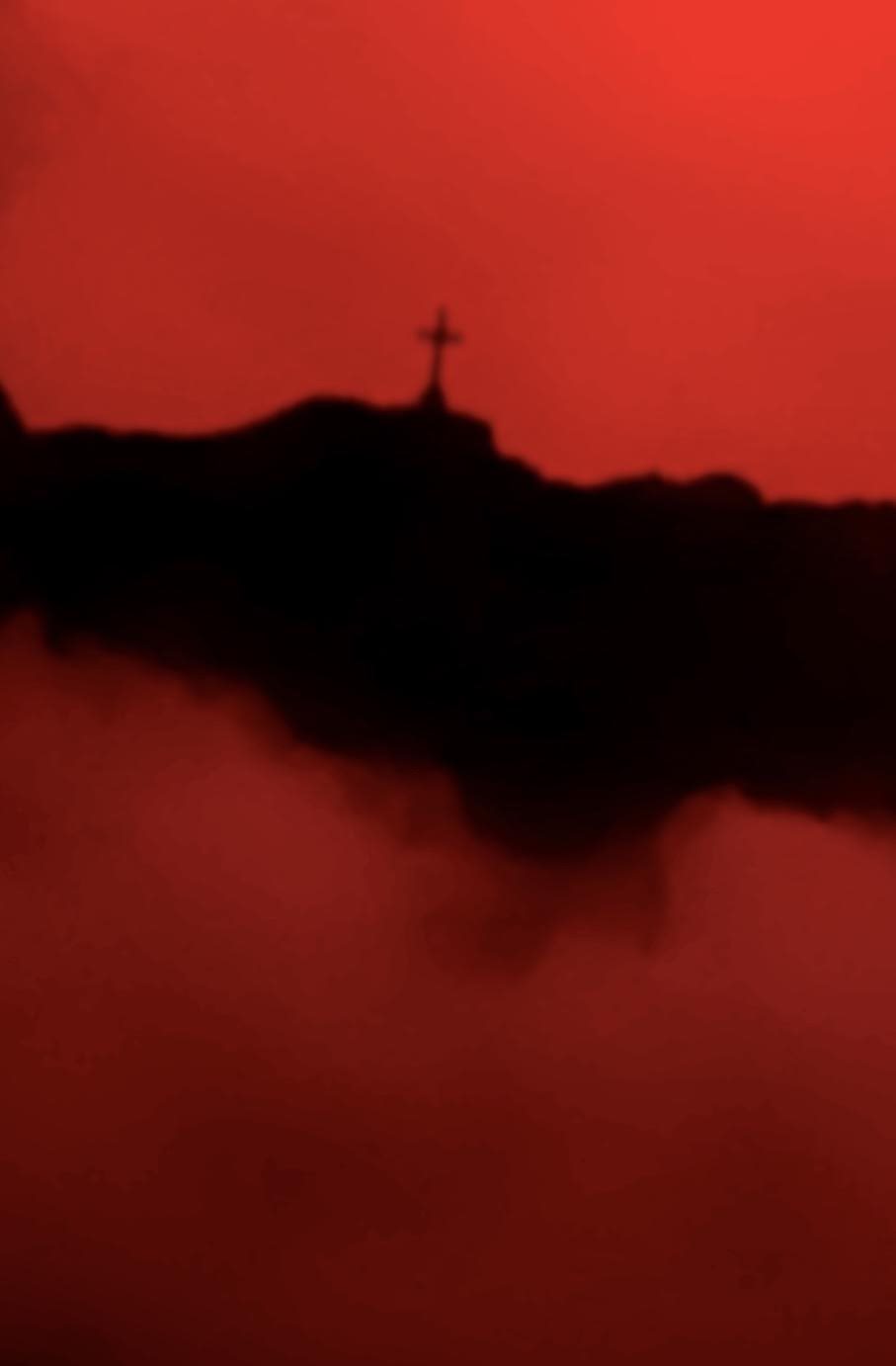
We arrived early afternoon at the Castle Dracula Hotel. Radu advised that the statue of Bram Stoker in the front of the entrance is the only one in all of Romania. Construction of this well-visited spot began in 1974 in the general area where experts believed the fictional castle would have stood. With an elevation of about 3,661 feet, several buildings were connected in a staggering way, and a partial castle façade was built around them. It is worth mentioning that Bram Stoker’s notes provided a longitude and latitude which pointed to Mount Izvorul Calimanului, an extinct volcano about twenty miles south-east of the Borgo Pass. The ending of the original manuscript of Dracula had the castle devoured by this volcano. Dacre Stoker, Bram’s great, great grandnephew, has been working with the Romanian tourist officials to get a plaque placed at the top of this mountain with safe pedestrian access for visitors.
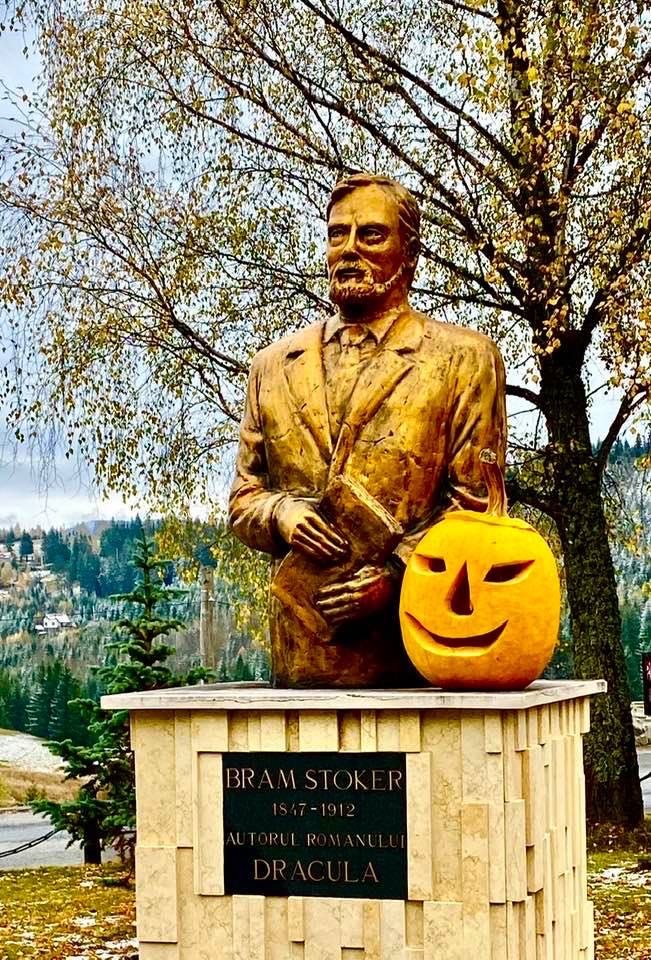
Several of us hiked up to a nearby church while others had lunch at the hotel restaurant.
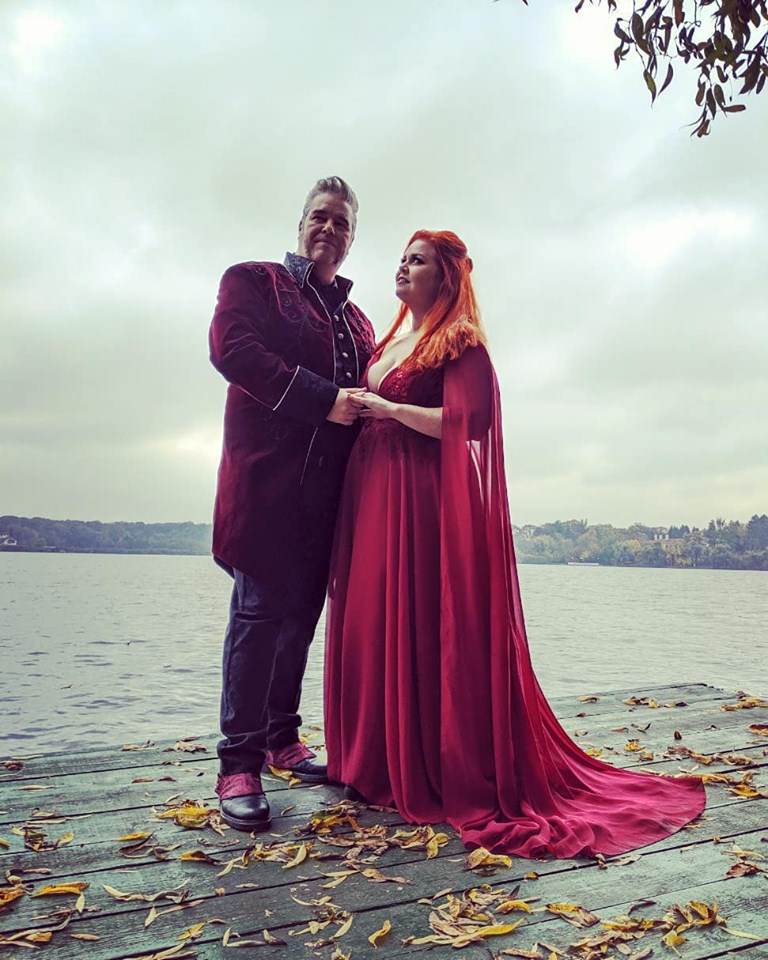
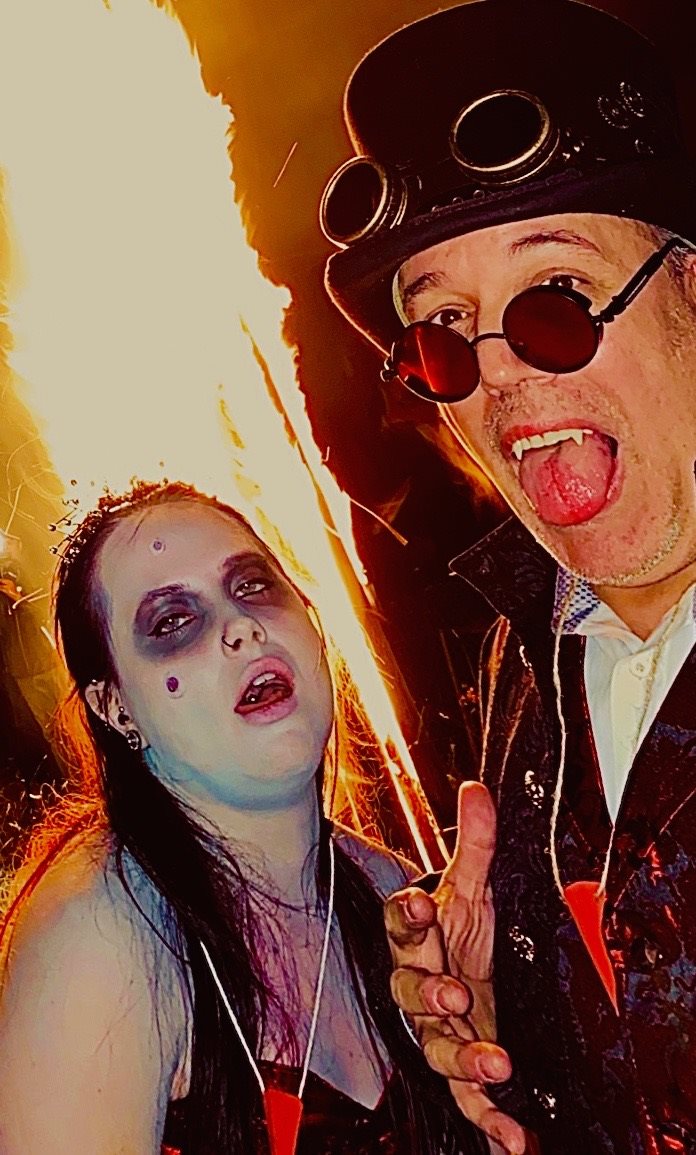
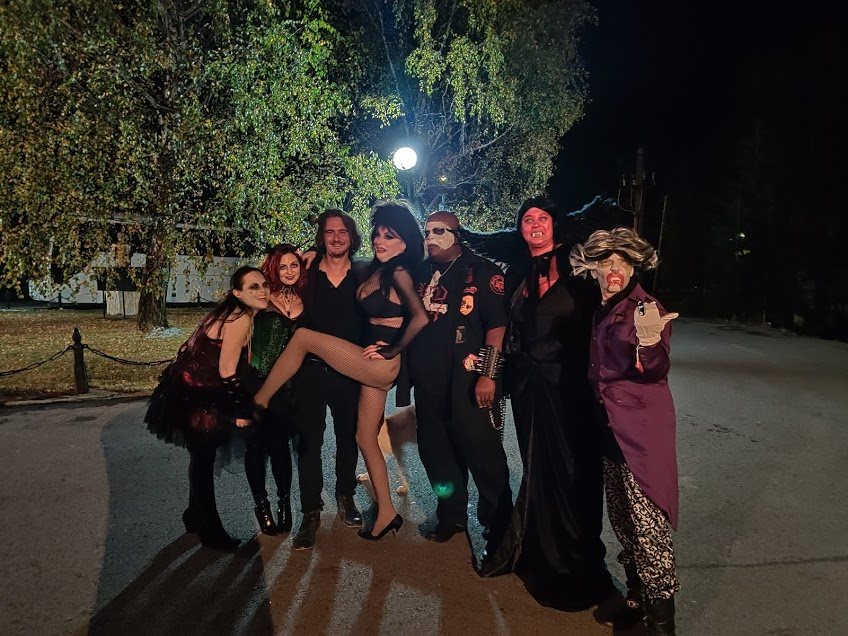
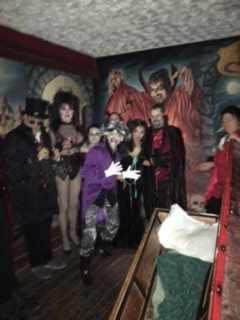
Day 6
Today our scream team traveled south to Sibiu. Many of us slept on the coach (it was daylight, you know) while others watched vampire flicks on the bus. We gazed upon miles of gorgeous, snowy, Carpathian Mountains coupled amongst beautiful, tiny villages and trees of every shade imaginable.
In Romania, the first of November is known as the Day of the Dead. Radu mentioned that this was the reason why we had seen millions of pots of mums for sale all over the side of the of the roads this week. On this day, families take flowers to the cemeteries and light candles in celebration and memory of their departed loved ones. The bus stopped at one such graveyard in the late afternoon for us to see firsthand what this tradition was like.
After checking into the Hotel Continental Forum, we went for an extremely brisk walk of the historic square. Radu mentioned that the square was a popular destination for the Christmas market, which they were already busy preparing with decoration. We also visited the famous cathedral where Vlad the Impaler’s oldest son, Mihnea cel Rau, was murdered and buried. Mihnea was not very popular with the boyars. Though he ruled briefly in 1510, Vlad’s eldest was overthrown with Ottoman assistance and was forced to take refuge in Sibiu. While attending mass one day, he was stabbed in front of the Lutheran Cathedral and was buried inside.
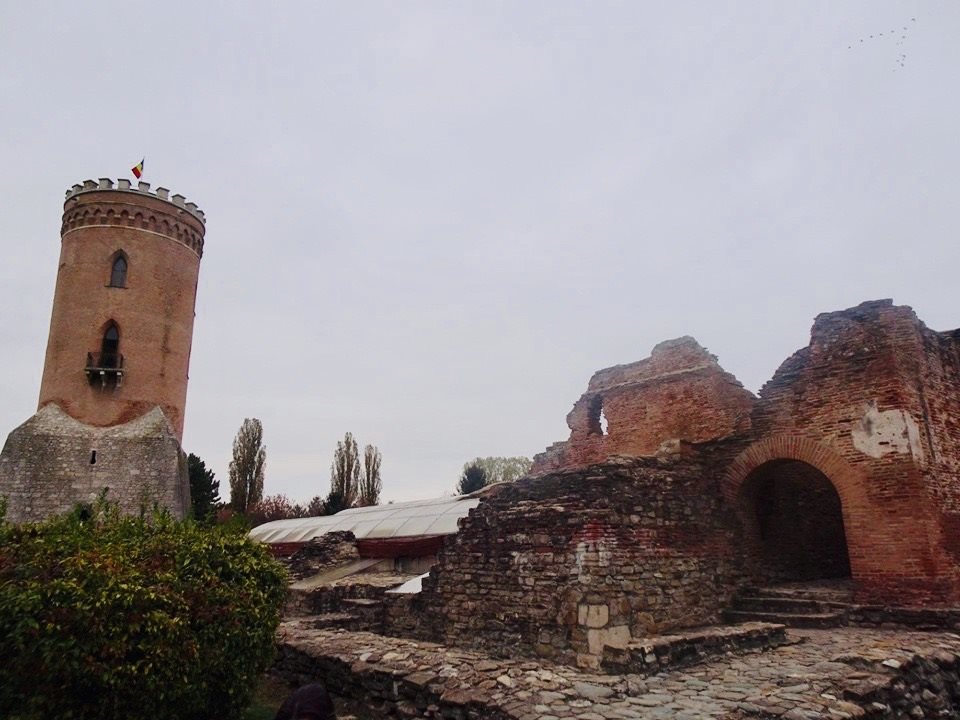
Radu also mentioned that the site had ties with Mary Shelly, the author of Frankenstein! The story’s origins began at the cathedral when a young, deformed man was chained in the lower part of the building which served as a prison. He was treated poorly by the community and became somewhat of a scientific experiment of the day. The surname of the family was even Frankenstein; the man is also buried there, along with several members of his family.
Day 7
This was our final day of excursion before flying back to the United States. It was probably one of our busiest as well – for we were up, dressed, and breakfasted much earlier than usual to head out to three important destinations, spanning many miles apart.
The first drive brought us to destination one: the beautiful Cozia Monastery. This ornate structure was completed in 1391 and is an impressive backdrop against the bank of the gorgeous Olt River. Vlad Tepes’ grandfather, Mircea I of Wallachia, was buried there. The well-preserved Byzantine architecture contained frescoes dating back to 1390 which are still vibrant today. Vlad III Dracula’s grandfather ruled from 1386 to 1394 and again from 1397 to 1418. This valuable national monument was also used in the 2014 film Dracula Untold. Once again, like most of the locations we traveled, ‘our kind’ tended to attract numerous canines. Were these dogs the ‘Hounds of Hell’ that the Frog brothers warned about in Lost Boys? Regardless, it was always humorous to point out to Radu that when pooches, coffee or souvenirs abound, his audience suddenly disappeared like a vampire in the sun.
Next we made our way to perhaps the most important ruins yet related to Vlad the Impaler: Poienari Fortress. Unfortunately, we were unable to go up the 1,480 steps to view the imposing remains of the castle and breathtaking view due to a bear alert. Radu mentioned that a ski lift is in the works which is expected to attract more visitors who may otherwise be unable to trek up Mount Cetatea while also reducing the number of slips or falls and bear attacks.
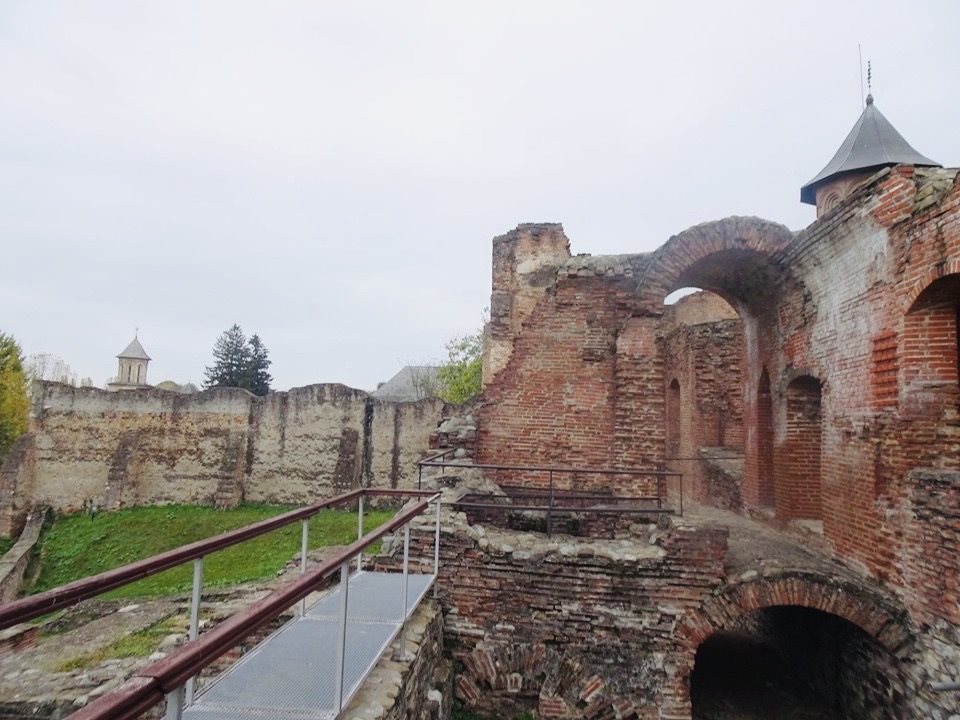
The original castle was constructed in the thirteenth century and had been abandoned for decades when Vlad III Dracula decided to rebuild and use it as his main residence, protecting himself against the Ottoman Turks. It has been documented that an abundance of blood, sweat and tears seeped into the citadel because many of the younger, strongest individuals Dracula captured and spared impalement slaved away on the castle for years and literally worked until their clothes fell off. Vlad III escaped one attack via an underground tunnel, riding away on a horse with its shoes on backwards, while his first wife jumped to her death into the Arges River below, now referred to as the “Princess’ River.” Many overnight tourists and professional paranormal investigators alike over the years have claimed disturbances from nightmares, illness, plummeting cold temperatures (even in July) to strange noises, the smell of rotten flowers, and being ‘bitten’ during their visit. Likewise, the ruins have been used in numerous movies and television shows from The Hardy Boys/Nancy Drew mysteries and Da Vinci’s Demons to historical documentaries and fictional films featuring Vlad the Impaler. After making good use of our zoom lens from the main road, we lunched at a restaurant by the ‘bear sign’ before heading out to destination three.
Next we coached southeast to the city of Targoviste, which was the capital of Wallachia during the time of Vlad III Dracula. The princely court began with the Impaler’s grandfather and further established by Vlad II. However, Vlad Tepes overhauled the compound, adding stone walls, a moat, and the infamous Chindia Tower which became a symbol of the city. Radu mentioned that Dracula had prisoners thrown into a pit below. Though the fall did not usually kill the unfortunates (rendering numerous broken bones), the hungry wild boars, on the other hand, undoubtedly finished the job.
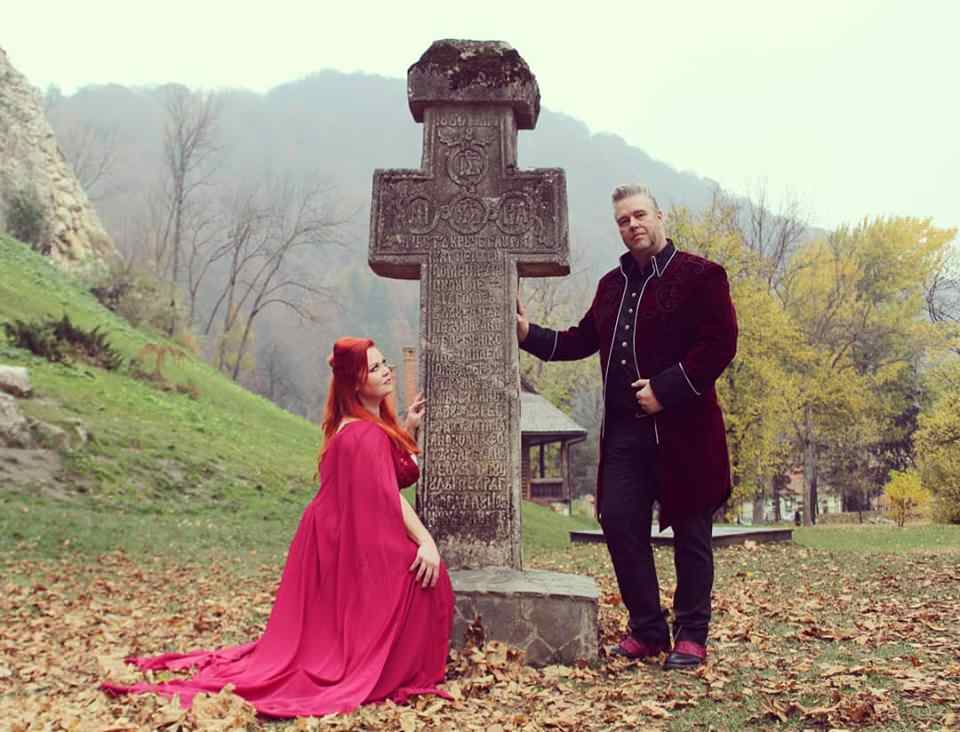
The city faced many sieges and invasions during the Impaler’s day and was the location of the infamous Night Attack and Forest of the Impaled. In a letter Vlad III himself wrote to Matthias Corvinus he admitted impaling 23,844 Turks. Though the Sultan and his troops greatly outnumbered Dracula’s, the grizzly site caused the former to flee in horror. The forested area no longer existed, still the clearing outside the ruined walls was marked with stones and represented a plot where some of the impalements stood. To break the macabre feeling, our very own Carl decided to strike up an audience when he appeared at the balcony of Chindia Tower and sung a verse and chorus of “Don’t Cry for Me Argentina.” We believed his Romanian reception at least equaled that of Dracula discarding a live body into the pig pit.
After taking countless photos and the procurement of innumerable souvenirs, we all returned to the coach one last time to travel back to the Hotel Central in Bucharest. There, we enjoyed one last dinner together.
Day 8
We all bid farewell to Romania and returned to the U.S. None of us were left behind but I’m not not sure if any of us were “turned.”
On behalf of my fellow tourists, we all thank Charles of DracTours.com for making such a pilgrimage possible, to Radu our invaluable guide, and to Stephan, our fearless driver - for a week of education and fun. You all helped to make plenty beautiful music and lasting memories for us children of the night!
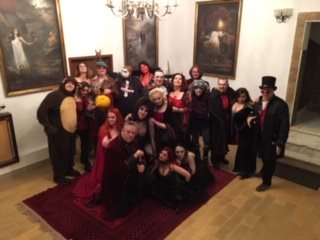
|
|
||

|
 |
|
Copyright © International Tours & Events LLC. All rights reserved







